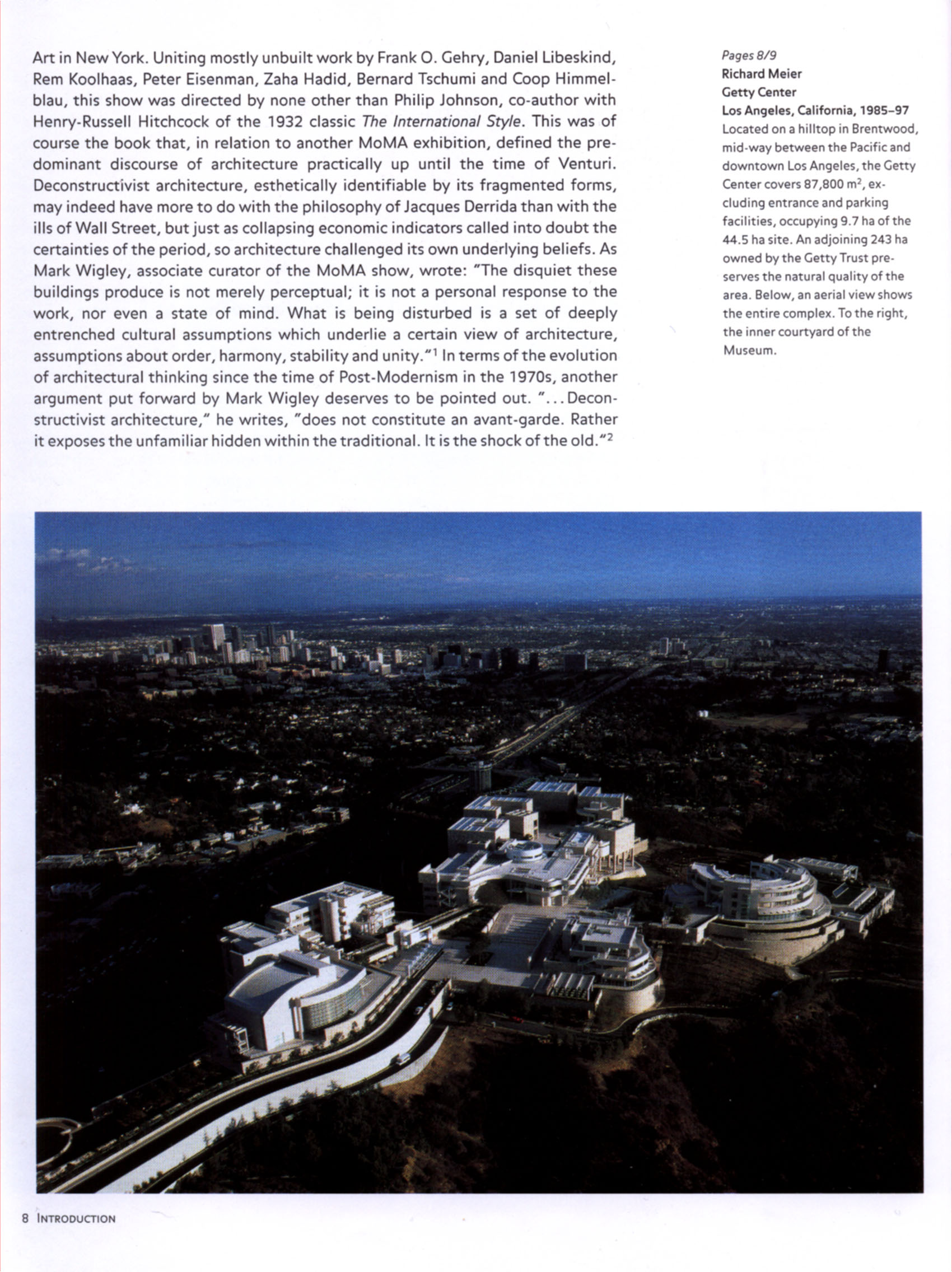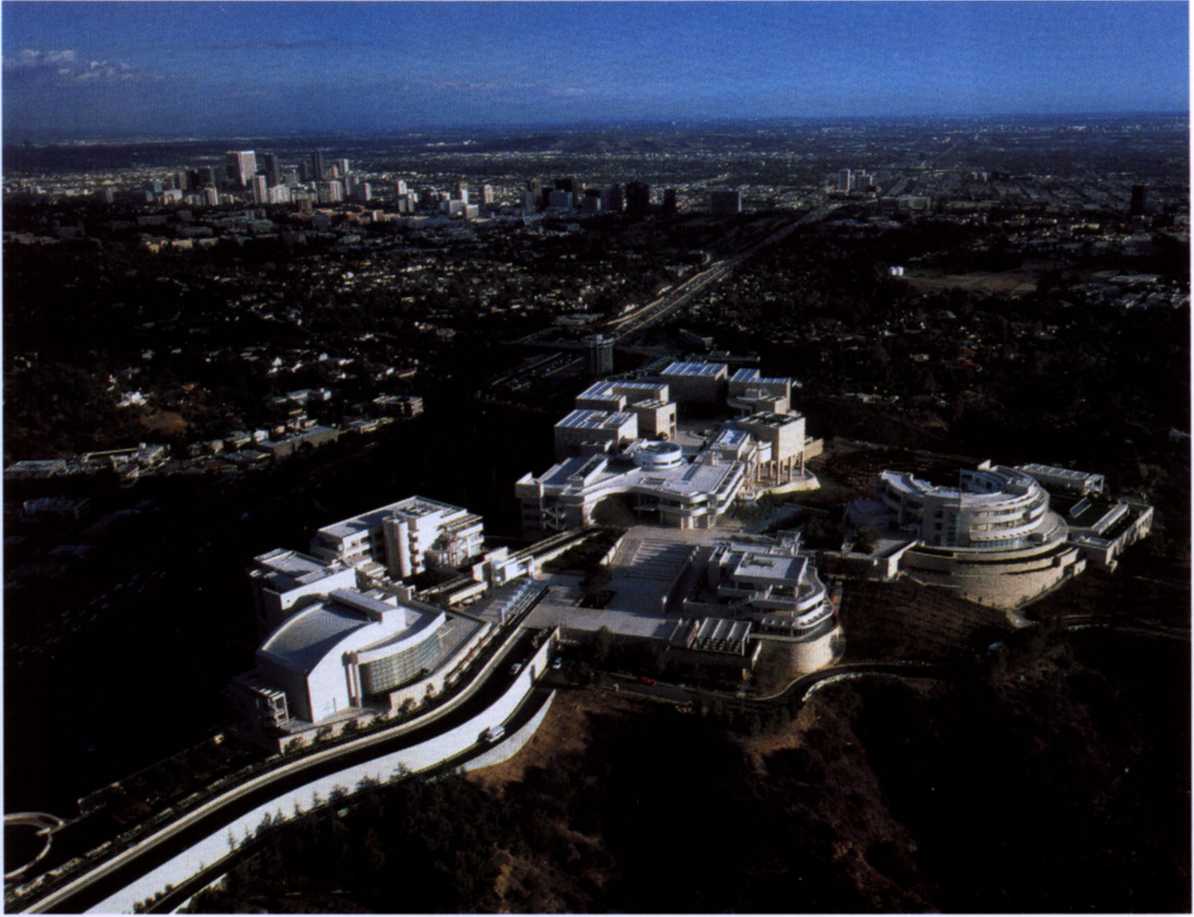New Forms Taschen 006

Art in New York. Uniting mostly unbuilt work by Frank O. Gehry, Daniel Libeskind, Rem Koolhaas, Peter Eisenman, Zaha Hadid, Bernard Tschumi and Coop Himmel-blau, this show was directed by nonę other than Philip Johnson, co-author with Henry-Russell Hitchcock of the 1932 classic The International Style. This was of course the book that, in relation to another MoMA exhibition, defined the pre-dominant discourse of architecture practically up until the time of Venturi. Deconstructivist architecture, esthetically identifiable by its fragmented forms, may indeed have morę to do with the philosophy of Jacques Derrida than with the ills of Wall Street, but just as collapsing economic indicators called into doubt the certainties of the period, so architecture challenged its own underlying beliefs. As Mark Wigley, associate curator of the MoMA show, wrote: "The disquiet these buildings produce is not merely perceptual; it is not a personal response to the work, nor even a State of mind. What is being disturbed is a set of deeply entrenched cultural assumptions which underlie a certain view of architecture, assumptions about order, harmony, stability and unity."1 In terms of the evolution of architectural thinking sińce the time of Post-Modernism in the 1970s, another argument put forward by Mark Wigley deserves to be pointed out. .. Decon-structivist architecture," he writes, "does not constitute an avant-garde. Rather it exposes the unfamiliar hidden within the traditional. It is the shock of the old."2
Pages 8/9 Richard Meier Getty Center
Los Angeles, California, 1985-97 Located on a hilltop in Brentwood, mid-way between the Pacific and downtown Los Angeles, the Getty Center covers 87,800 mJ, ex-cluding entrance and parking facilities, occupying 9.7 ha of the 44.5 ha site. An adjoining 243 ha owned by the Getty Trust pre-serves the natural quality of the area. Below, an aerial viewshows the entire complex. To the right, the inner courtyard of the Museum.

8 Introduction
Wyszukiwarka
Podobne podstrony:
45895 New Forms Taschen 019 art and new expressions of the built form. As in art, there may be no do
New Forms Taschen 158 Cuba, in January 1995 gave rise to his Havana Project, which is a proposal for
New Forms Taschen 190 Samitaur in Culver City challenges the use of urban space in a slightly differ
New Forms Taschen 105 seen in this building marks a elear relation to the Japanese tradition of the
New Forms Taschen 108 bombing in 1944, and the reconstruction of Ulm was carried out without much re
Godel s Proof CIP?ta NEW YORK UNIVERSITY PRESS New York and London Copyright © 2001 by New York Un
FROM NEW YORK TIMES BESTSELLING AUTHOR Ilona AndrewsMAGIC SLAYS -•AKATE DANIELS N0VEL*- Katc Daniels
Godel s Proof CIP?ta NEW YORK UNIVERSITY PRESS New York and London Copyright © 2001 by New York Un
więcej podobnych podstron